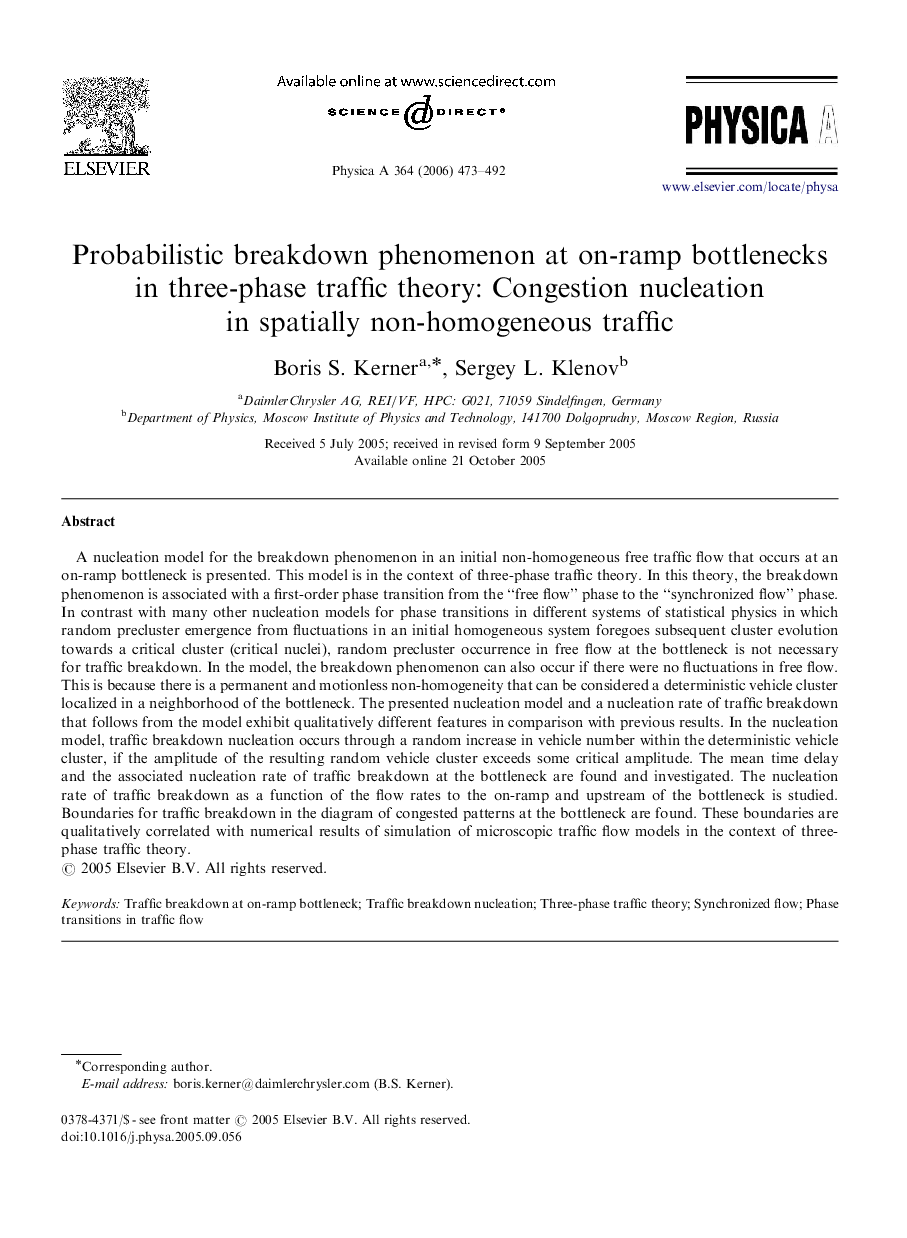| Article ID | Journal | Published Year | Pages | File Type |
|---|---|---|---|---|
| 977536 | Physica A: Statistical Mechanics and its Applications | 2006 | 20 Pages |
A nucleation model for the breakdown phenomenon in an initial non-homogeneous free traffic flow that occurs at an on-ramp bottleneck is presented. This model is in the context of three-phase traffic theory. In this theory, the breakdown phenomenon is associated with a first-order phase transition from the “free flow” phase to the “synchronized flow” phase. In contrast with many other nucleation models for phase transitions in different systems of statistical physics in which random precluster emergence from fluctuations in an initial homogeneous system foregoes subsequent cluster evolution towards a critical cluster (critical nuclei), random precluster occurrence in free flow at the bottleneck is not necessary for traffic breakdown. In the model, the breakdown phenomenon can also occur if there were no fluctuations in free flow. This is because there is a permanent and motionless non-homogeneity that can be considered a deterministic vehicle cluster localized in a neighborhood of the bottleneck. The presented nucleation model and a nucleation rate of traffic breakdown that follows from the model exhibit qualitatively different features in comparison with previous results. In the nucleation model, traffic breakdown nucleation occurs through a random increase in vehicle number within the deterministic vehicle cluster, if the amplitude of the resulting random vehicle cluster exceeds some critical amplitude. The mean time delay and the associated nucleation rate of traffic breakdown at the bottleneck are found and investigated. The nucleation rate of traffic breakdown as a function of the flow rates to the on-ramp and upstream of the bottleneck is studied. Boundaries for traffic breakdown in the diagram of congested patterns at the bottleneck are found. These boundaries are qualitatively correlated with numerical results of simulation of microscopic traffic flow models in the context of three-phase traffic theory.
